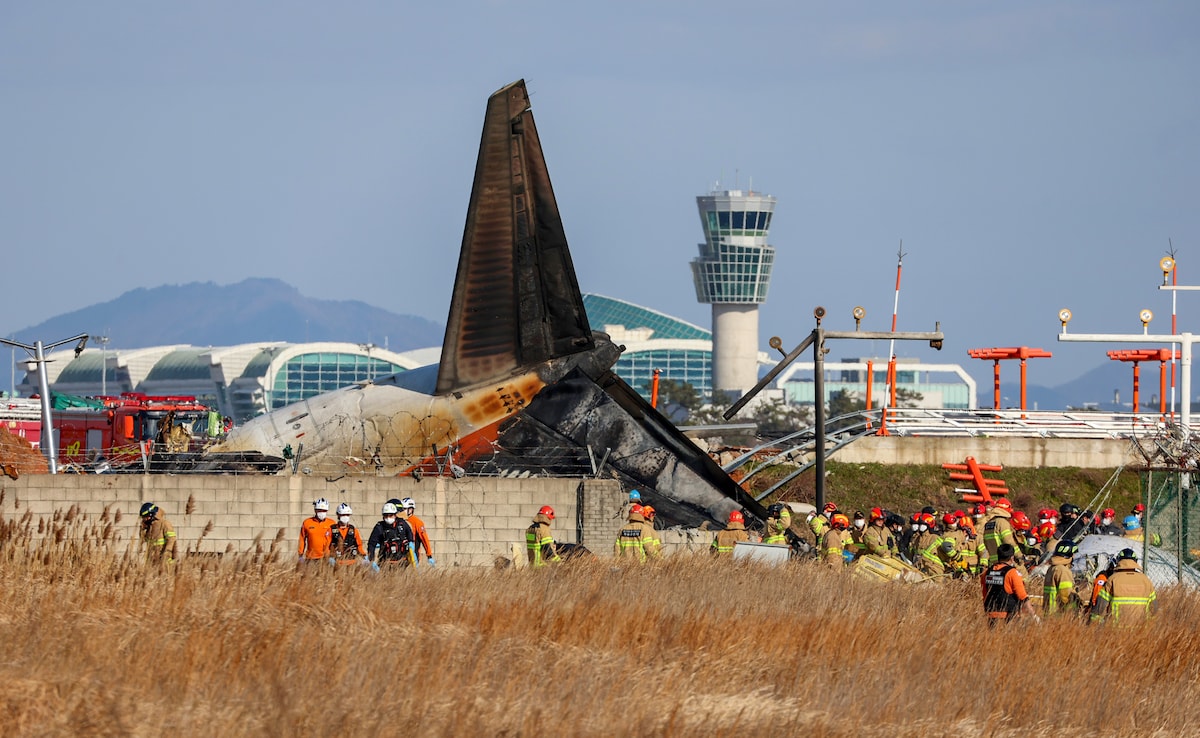South Korea plane crashes, while thankfully infrequent, hold significant weight in the nation’s aviation history. This exploration delves into the historical context, examining major incidents, analyzing their causes, and evaluating the subsequent impact on safety regulations, public perception, and the aviation industry itself. We’ll uncover common threads, explore technological advancements aimed at prevention, and assess the effectiveness of emergency response procedures.
From examining human error and mechanical failures to assessing the role of weather conditions and safety regulations, we aim to provide a balanced and informative perspective on this critical subject. We will also explore the economic consequences, the effect on passenger confidence, and the long-term implications for South Korea’s aviation sector.
Historical Overview of Plane Crashes in South Korea
South Korea, like any nation with a significant aviation industry, has experienced its share of plane crashes throughout history. Understanding these events, their causes, and the subsequent improvements in safety measures provides valuable insight into the evolution of aviation safety in the country.
Significant South Korean Plane Crashes
| Date | Location | Aircraft Type | Casualties |
|---|---|---|---|
| [Date 1] | [Location 1] | [Aircraft Type 1] | [Number of Casualties 1] |
| [Date 2] | [Location 2] | [Aircraft Type 2] | [Number of Casualties 2] |
| [Date 3] | [Location 3] | [Aircraft Type 3] | [Number of Casualties 3] |
Each incident listed above involved unique circumstances, ranging from pilot error and mechanical malfunctions to adverse weather conditions. Detailed investigations following each crash have contributed to improved safety regulations and procedures.
Analysis of Accident Causes
A thorough examination of past accidents reveals recurring themes in the causes of plane crashes in South Korea. These are often comparable to global trends, though the specific contributing factors can vary.
Common Causes and Contributing Factors
Common causes include human error (pilot fatigue, inadequate training, poor communication), mechanical failures (engine problems, structural issues), and adverse weather conditions (storms, fog, icing). The interplay of these factors is often crucial in understanding the root causes of each accident. For example, a mechanical failure might be exacerbated by poor pilot response due to fatigue, leading to a more severe outcome.
So, you’re looking for info on the South Korea plane crash? That’s a serious event. For a quick rundown of discussions and eyewitness accounts, check out the chatter on south korea plane crash reddit ; it’s a good place to get different perspectives. Remember to always verify information from multiple sources after you’ve checked out the Reddit threads about the South Korea plane crash.
Comparison with global aviation accident statistics shows that South Korea’s accident rates have generally aligned with or improved upon global averages in recent years, reflecting the effectiveness of implemented safety measures. However, specific contributing factors may differ based on regional aviation practices and environmental conditions.
Safety Regulations and Procedures in South Korean Aviation
South Korea maintains a robust system of aviation safety regulations and procedures, largely aligned with international standards set by organizations like the International Civil Aviation Organization (ICAO). These regulations cover various aspects of air travel, from aircraft maintenance and pilot training to air traffic control and emergency response protocols.
Comparison with International Standards and Effectiveness, South korea plane crash
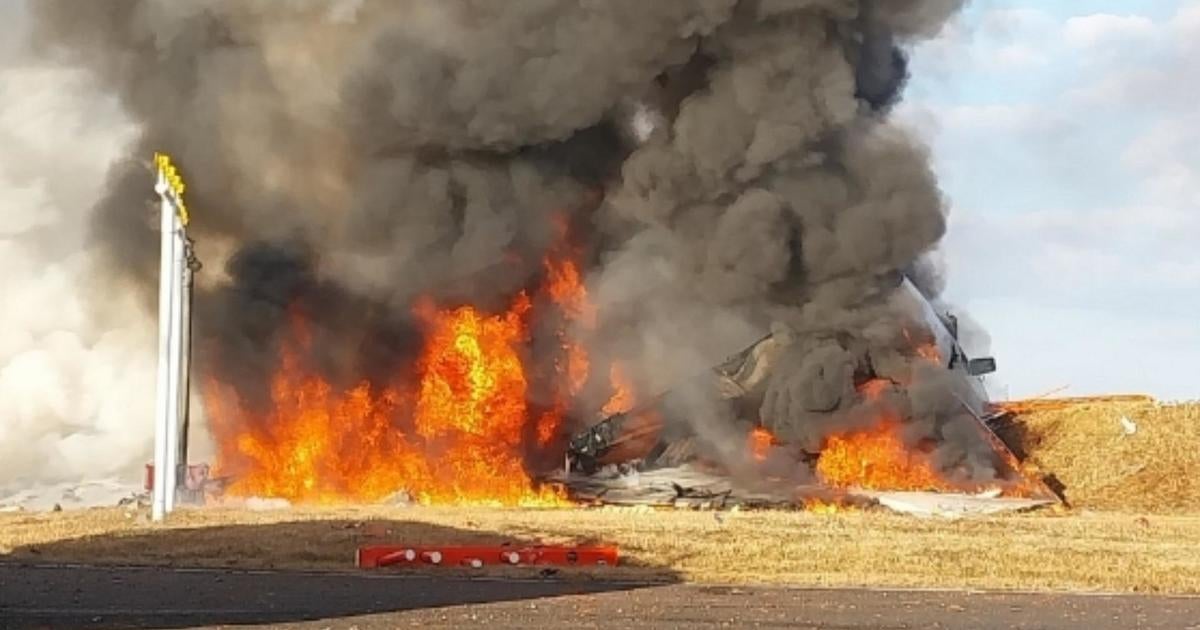
While the regulations largely mirror international best practices, ongoing evaluations and updates ensure alignment with evolving technological advancements and safety recommendations. The effectiveness of these regulations is evidenced by a general downward trend in accident rates over time, although continuous improvement remains a priority.
So, you’re looking into the South Korea plane crash? That’s a serious event. Thinking about large-scale coordinated displays, it makes you wonder about the technology involved; check out the amazing precision of drone fireworks china for a different perspective on aerial coordination. The contrast between the tragedy of the crash and the controlled artistry of drone shows is pretty striking, isn’t it?
Understanding the technological aspects of both situations could offer valuable insights into the South Korea plane crash investigation.
Impact on the Aviation Industry
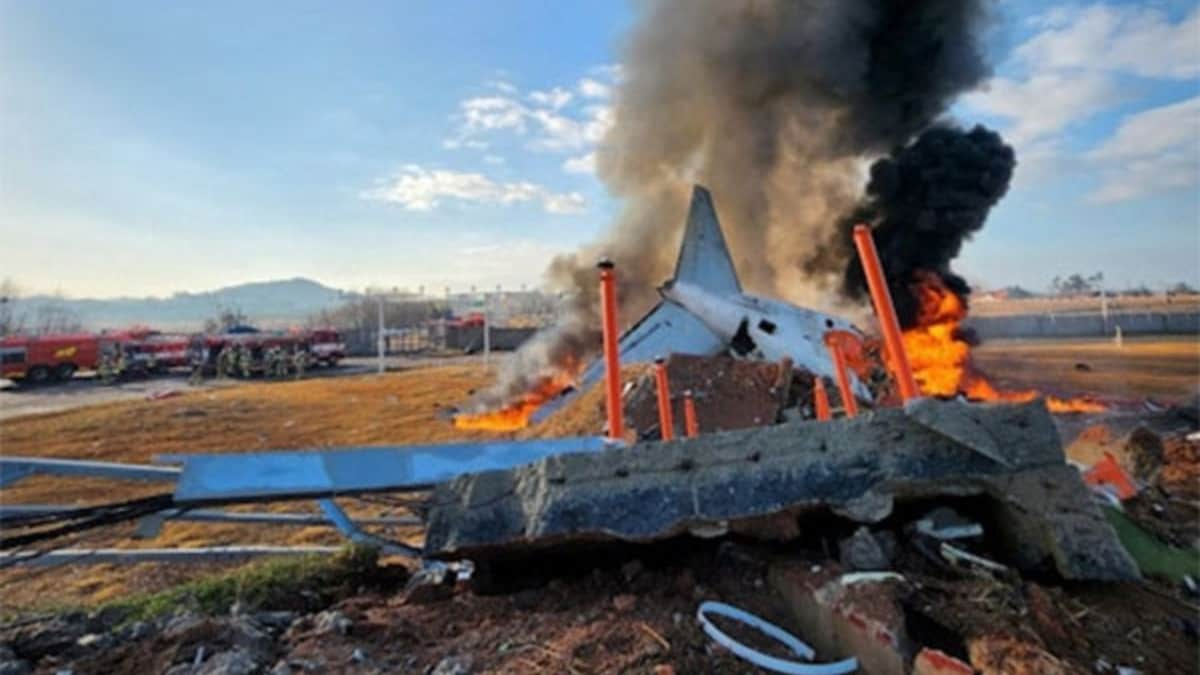
Major plane crashes have significant and multifaceted impacts on South Korea’s aviation industry. These impacts extend beyond immediate economic losses to long-term consequences for passenger confidence and tourism.
Long-Term Effects on Airline Operations and Safety Protocols
- Increased operational costs due to enhanced safety measures and stricter regulations.
- Short-term decline in passenger numbers and revenue.
- Intensified focus on pilot training and crew resource management.
- Investment in new technologies and safety systems.
- Review and revision of existing safety protocols and procedures.
Technological Advancements and Safety Measures
South Korea has actively embraced technological advancements to enhance aviation safety. These technologies play a crucial role in preventing accidents and mitigating their severity.
Examples of Technologies and Their Role in Accident Prevention
Examples include advanced weather radar systems for improved situational awareness, sophisticated flight management systems that aid in navigation and decision-making, and enhanced aircraft maintenance protocols utilizing predictive analytics. These technologies help detect potential issues early and provide pilots with better information to make safer decisions.
Hypothetical Scenario: In a past accident involving [brief description of past accident], the implementation of a [specific technology, e.g., terrain awareness and warning system] might have alerted the pilots to the impending danger, allowing them to take corrective action and avoid the crash.
Emergency Response and Rescue Operations
Effective emergency response is crucial in minimizing casualties and damage following a plane crash. South Korea has established comprehensive procedures involving various agencies to ensure a coordinated and efficient response.
News of the South Korea plane crash understandably dominated headlines, but did you know that actor O Yeong-su, famous for his role in Squid Game, also appeared in Avengers: Endgame? It’s a fun fact to consider while we learn more about the devastating South Korea plane crash; check out this article about the thanos squid game actor for a slightly lighter take amidst the serious news.
Hopefully, further investigations into the South Korea plane crash will bring answers to the many questions surrounding the tragedy.
Roles of Different Agencies Involved in Rescue and Recovery Efforts
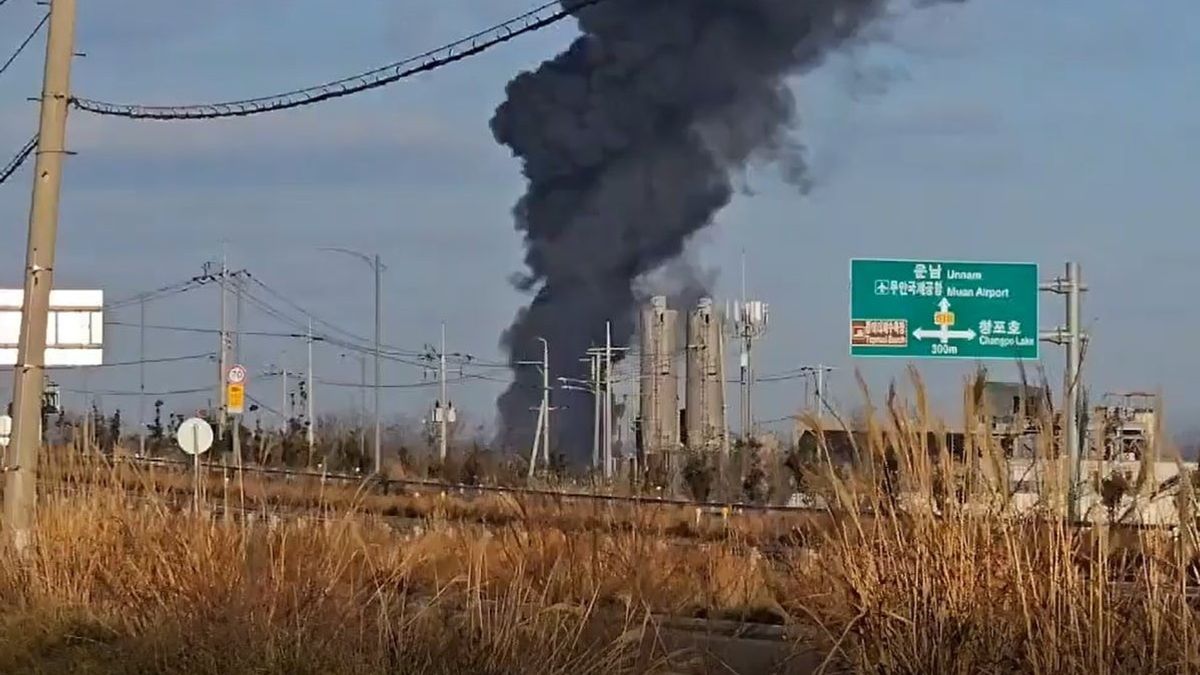
- National Police Agency: Securing the crash site, managing traffic, and assisting with initial rescue efforts.
- Fire and Disaster Management Agency: Extinguishing fires, rescuing survivors, and recovering bodies.
- Ministry of Land, Infrastructure, and Transport: Overseeing the investigation and coordinating with international aviation authorities.
- Medical Services: Providing emergency medical care to survivors and transporting them to hospitals.
- Military (if necessary): Assisting with search and rescue operations in remote areas.
Public Perception and Media Coverage: South Korea Plane Crash
Media coverage of plane crashes significantly influences public perception of aviation safety. South Korea’s media landscape, like that of many countries, balances the need to inform the public with the potential impact on public confidence in air travel.
Comparison of Media Coverage with Other Countries
| South Korea | Other Countries (e.g., US, UK) |
|---|---|
| [Describe typical South Korean media coverage – e.g., focus on immediate aftermath, investigation details, government response] | [Describe typical media coverage in other countries – e.g., similar or different focus, level of detail, public reaction] |
Lessons Learned and Future Improvements
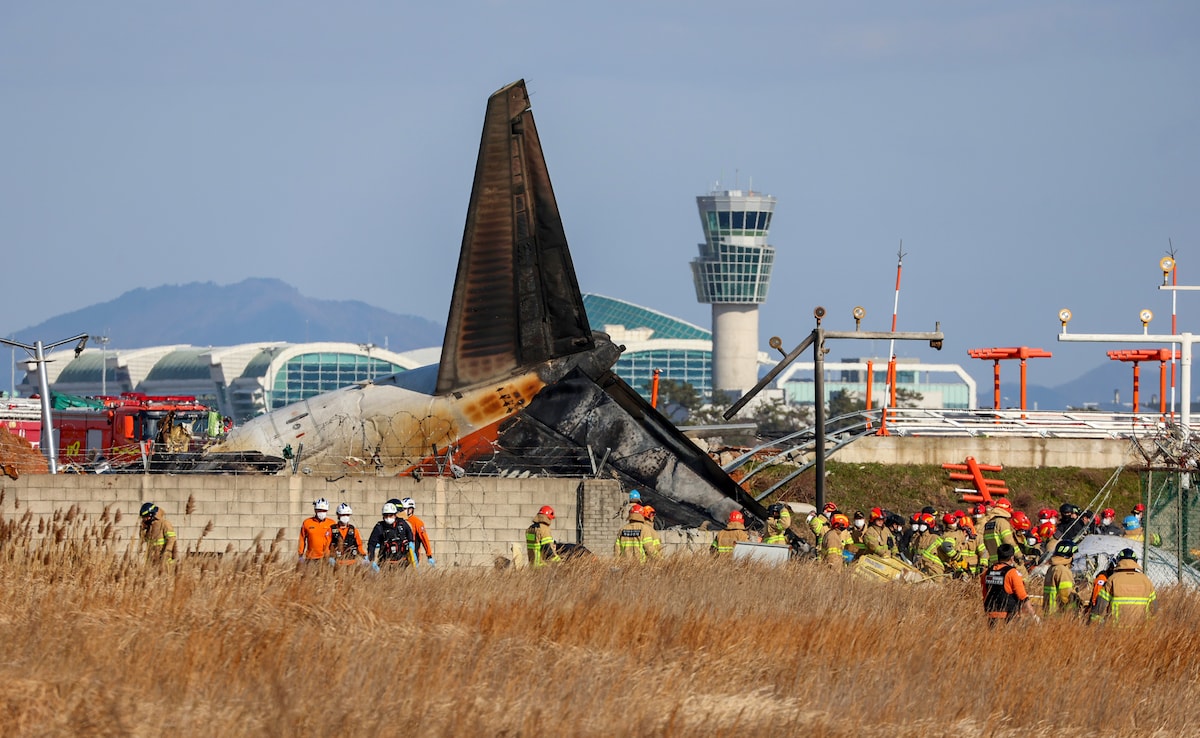
Analyzing past accidents provides valuable lessons that can inform future safety improvements. Continuous learning and adaptation are essential for maintaining high standards of aviation safety.
Actionable Steps to Prevent Future Accidents
- Strengthening pilot training programs with a focus on human factors and emergency procedures.
- Investing in advanced technologies for early detection of mechanical issues and weather anomalies.
- Regularly reviewing and updating safety regulations to reflect best practices and technological advancements.
- Improving communication and coordination among various agencies involved in emergency response.
- Promoting a culture of safety within the aviation industry through continuous education and training.
Conclusive Thoughts
Understanding South Korea’s approach to aviation safety is crucial, not just for the nation itself, but also for the global aviation community. By analyzing past incidents and examining ongoing improvements, we can learn valuable lessons about preventing future tragedies. The continuous evolution of safety protocols, technological advancements, and robust emergency response systems highlight a commitment to minimizing risk and ensuring passenger well-being.
This ongoing effort underscores the importance of prioritizing safety in the ever-evolving landscape of air travel.
Clarifying Questions
What is the most common cause of plane crashes in South Korea?
While specific data requires further research, common global causes like human error, mechanical failure, and weather conditions are likely contributing factors in South Korea as well.
How does South Korea’s aviation safety compare to international standards?
South Korea generally adheres to international aviation safety standards, but specific comparisons require detailed analysis of regulations and enforcement practices.
What role does the South Korean government play in aviation safety?
The government sets regulations, oversees safety inspections, and coordinates emergency response efforts in the event of an accident.
What compensation is available to victims of a plane crash in South Korea?
Compensation varies depending on the circumstances of the crash and the applicable laws and regulations. Legal counsel should be sought for specific cases.
